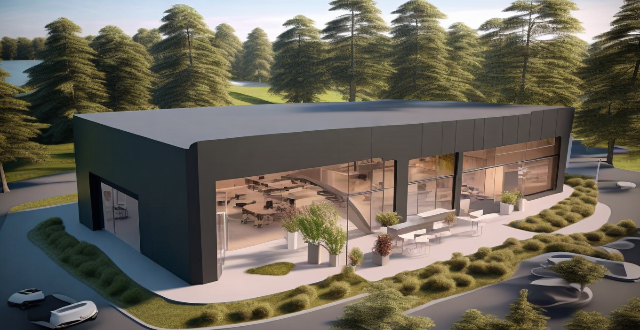Huawei's evolution in industrial design (ID) showcases the company's commitment to innovation, aesthetic appeal, and user experience in the realm of smartphones and electronic devices. Over the years, Huawei has transitioned from a functional focus to embracing sleek and modern designs, incorporating innovative features, and emphasizing ecosystem integration with the development of HarmonyOS. Looking ahead, Huawei is set to explore sustainability and technology fusion, using eco-friendly materials and cutting-edge technologies like foldable displays. This journey demonstrates Huawei's dedication to offering users devices that are not only powerful but also visually stunning and seamlessly integrated within its growing product ecosystem.

Huawei's Evolution in ID Design Over the Years
Huawei, a leading global provider of information and communications technology (ICT) infrastructure and smart devices, has come a long way since its establishment in 1987. The company's journey in the world of smartphones and other electronic devices is marked by significant advancements in industrial design, also known as ID design. This evolution reflects Huawei's commitment to innovation, user experience, and aesthetic appeal. Let's delve into how Huawei's ID design has evolved over the years.
Early Days: Functional Focus
In the early days of Huawei's foray into the smartphone market, the focus was primarily on functionality rather than form. Devices were designed with utility in mind, prioritizing hardware performance and durability over sleek aesthetics or unique design elements.
Key Features:
- Rugged Construction: Phones were built to withstand wear and tear, often featuring bulky designs.
- Basic Form Factors: Early models followed conventional shapes and layouts, without much variation.
- Utilitarian Approach: Emphasis on practicality over visual appeal or distinctive styling.
Aesthetic Shift: Towards Sleek and Modern Designs
As Huawei gained more confidence in the market, there was a noticeable shift towards incorporating more refined and modern design elements into their devices. This period marked the beginning of Huawei's exploration with materials, colors, and overall form factors to create visually appealing products.
Notable Changes Included:
- Thinner Profiles: Devices became slimmer, making them more portable and comfortable to hold.
- Diverse Materials: Incorporation of metal, glass, and ceramic finishes for premium looks and feel.
- Color Variants: Introduction of a range of color options to cater to different user preferences.
Innovation and Distinctiveness: Enhancing User Experience
With the increasing competition in the smartphone market, Huawei started to push boundaries in ID design, introducing innovative features that not only looked good but also enhanced user experience.
Landmark Innovations:
- Curved Displays: Adoption of curved screens for improved visual immersion and ergonomics.
- Notch Designs: Implementation of notch displays to maximize screen real estate while maintaining front-facing camera placement.
- In-Display Fingerprint Scanning: Seamless integration of fingerprint sensors into the display for a cleaner look and convenience.
HarmonyOS and Ecosystem Integration
With the development and launch of Huawei's proprietary HarmonyOS, there has been a greater emphasis on designing devices that seamlessly integrate within Huawei's growing ecosystem of products and services.
Ecosystem-Centric Designs:
- Consistent UI/UX: Ensuring a uniform user interface and experience across various Huawei devices.
- Interoperability: Designing devices that easily connect and share data with other Huawei products, such as tablets, wearables, and home devices.
- Ecosystem Services Integration: Pre-installation of apps and services that tie directly into Huawei's ecosystem for a cohesive user journey.
Future Directions: Sustainability and Technology Fusion
Looking ahead, Huawei's ID design is likely to embrace sustainability by using eco-friendly materials and processes. Additionally, there will be further integration of cutting-edge technologies like foldable displays and advanced materials science to create devices that are not just beautiful but also at the forefront of technological innovation.
Anticipated Developments:
- Sustainable Materials: Use of recyclable or biodegradable materials in device construction.
- Foldable Technology: Further refinement and adoption of foldable screens for versatile usage scenarios.
- Advanced Materials Science: Exploration of new materials that offer improved durability, lighter weight, or unique properties.
In conclusion, Huawei's evolution in ID design reflects its dedication to combining aesthetic appeal with technological innovation. From functional beginnings to embracing sleek modernity and now pushing boundaries with ecosystem integration and sustainable practices, Huawei's journey is a testament to its commitment to providing users with both beautiful and powerful devices.